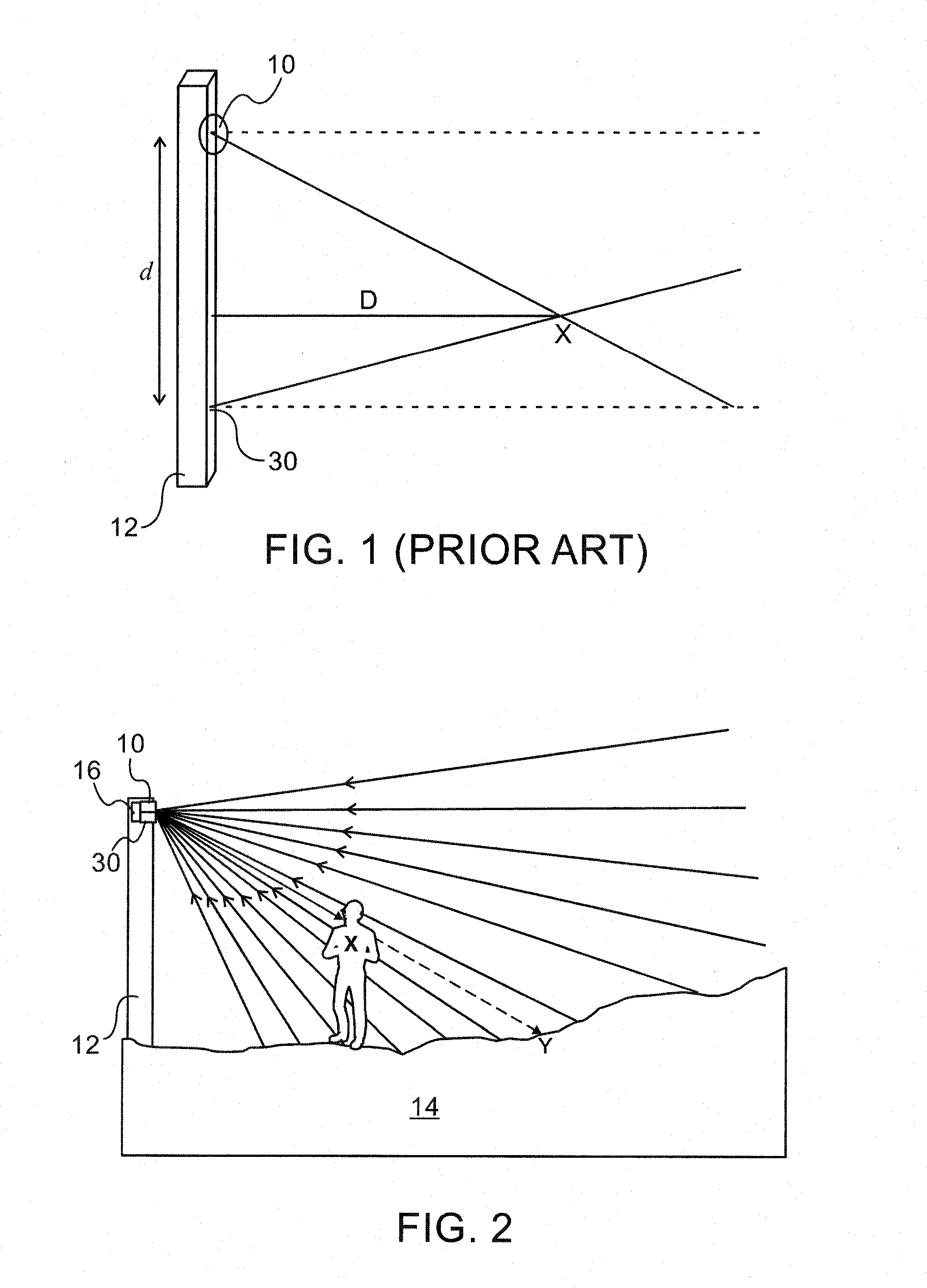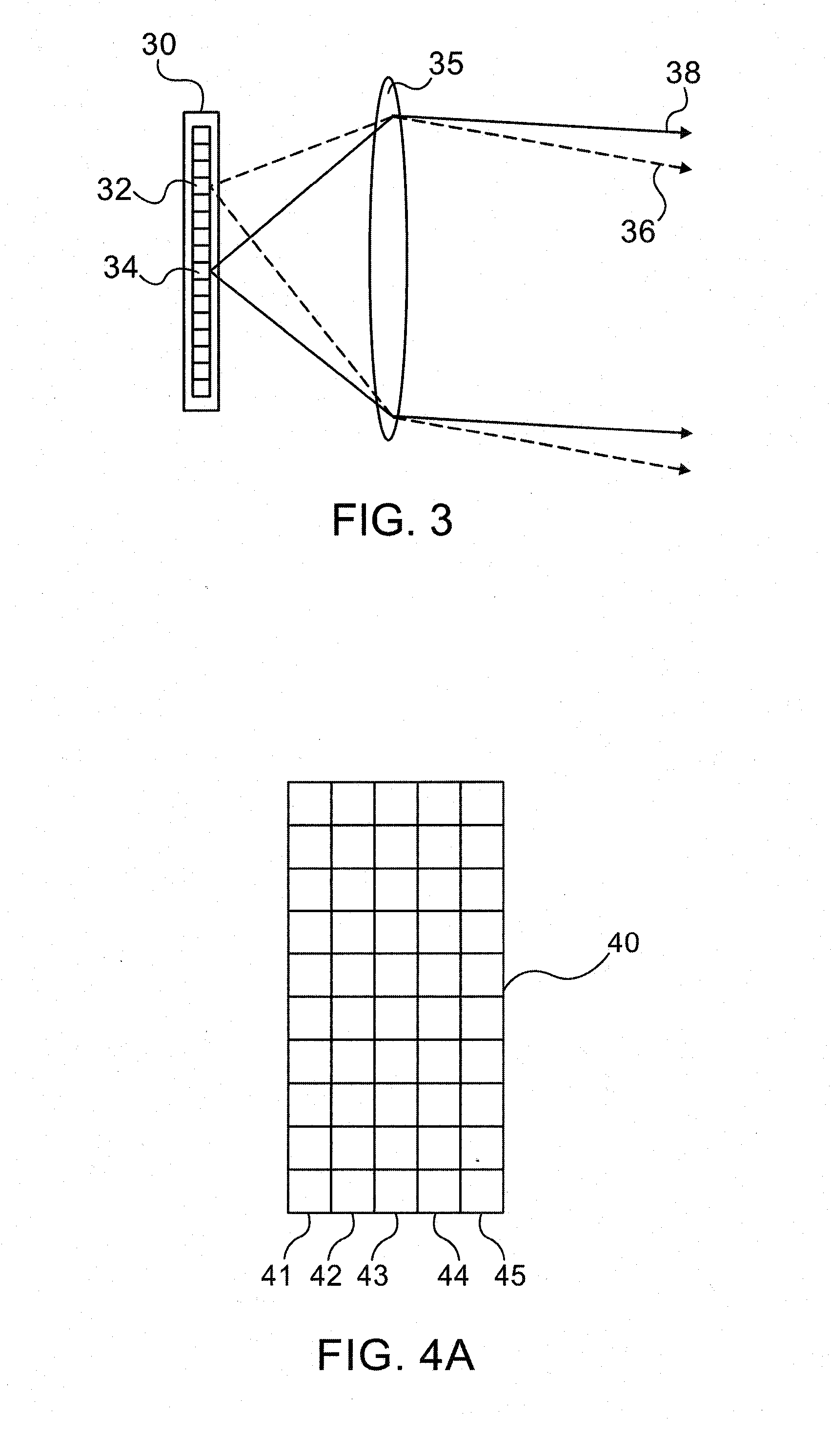Terrain surveillance system
a surveillance system and surveillance technology, applied in surveying and navigation, distance measurement, instruments, etc., can solve the problems of limited screening capabilities, high false alarm rate, limited widespread deployment, etc., and achieve low false alarm rate, low capital cost, and high sensitivity
- Summary
- Abstract
- Description
- Claims
- Application Information
AI Technical Summary
Benefits of technology
Problems solved by technology
Method used
Image
Examples
Embodiment Construction
[0042]Reference is made to FIG. 2, which illustrates an exemplary system for intrusion detection or terrain surveillance and mapping, using two features—an array of projected laser beams, propagating in the form of a curtain, and an array of detectors, each element of which is directed to detect light received from a particular field of view in the terrain to be surveilled. Individual pixels in the detector array are directed at specific angular locations in the field of view, such that each detector pixel is associated with a corresponding one of the array of laser sources. Thus, each individual laser source is aimed at its own specific angular direction, and each individual pixel of the detector array images light coming from its own specific angular direction, such that each pixel is known to image only light reflected from the point of impingement of the laser beam associated with the direction of that pixel. These two features are jointly able to define which beam has impinged ...
PUM
 Login to View More
Login to View More Abstract
Description
Claims
Application Information
 Login to View More
Login to View More - R&D
- Intellectual Property
- Life Sciences
- Materials
- Tech Scout
- Unparalleled Data Quality
- Higher Quality Content
- 60% Fewer Hallucinations
Browse by: Latest US Patents, China's latest patents, Technical Efficacy Thesaurus, Application Domain, Technology Topic, Popular Technical Reports.
© 2025 PatSnap. All rights reserved.Legal|Privacy policy|Modern Slavery Act Transparency Statement|Sitemap|About US| Contact US: help@patsnap.com



